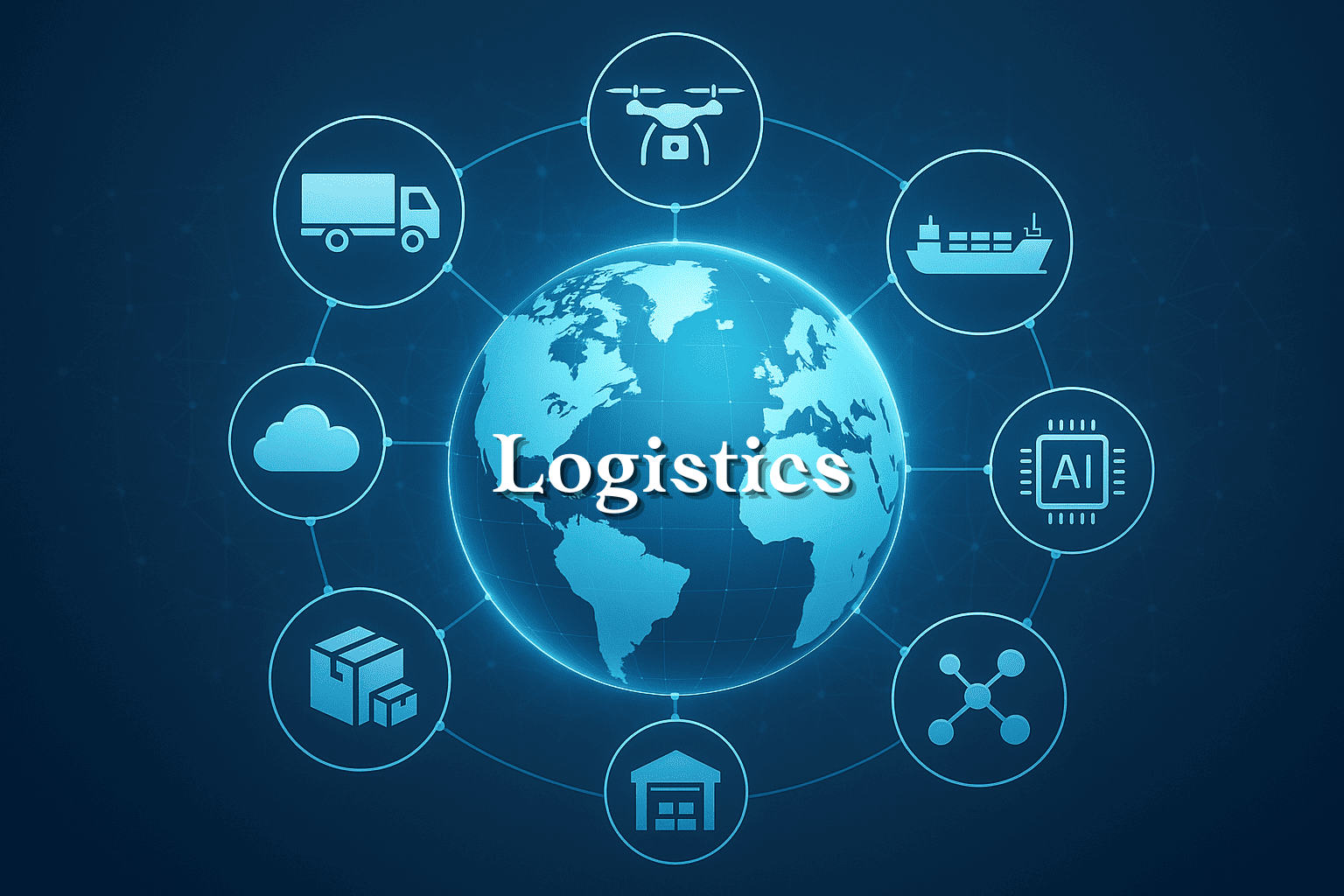Notifications
Manav Kapoor Invalid date 13 minutes, 39 seconds
400 views 0 Comments 0 Likes 0 Reviews

Hey folks! 👋 Ever ordered something online and obsessively checked its delivery status every few hours? Yep, same here. That’s the magic of real-time tracking in action—and guess what? It’s doing way more behind the scenes than just feeding our curiosity. Real-time tracking has totally revolutionized how logistics companies operate, from boosting efficiency to delighting customers like never before.
Let’s dive into how this nifty feature supercharges logistics software and why it’s no longer a “nice-to-have” but a must-have in today’s fast-moving supply chains.
Logistics today is like a high-speed race where every second counts. Whether you're moving electronics across cities or perishable goods across countries, timing and precision are everything. This is where real-time tracking comes in as the secret weapon.
In a world where Amazon sets the delivery bar high and customers expect to know where their packages are 24/7, logistics companies can’t afford to be in the dark. Real-time tracking in logistics software allows businesses to follow shipments, vehicles, and even individual packages as they move through the supply chain—live, minute by minute.
The result? Fewer delays, better planning, and a customer experience that feels personalized and trustworthy.
Real-time tracking in logistics software refers to the live monitoring of shipments, vehicles, and assets as they move across the supply chain. This is made possible through technologies like:
GPS (Global Positioning System)
RFID (Radio-Frequency Identification)
IoT (Internet of Things) sensors
Mobile apps and cellular networks
Think of it as having digital eyes on every vehicle and package, providing up-to-the-second updates and insights 🛰️.
We live in an era of instant gratification. Customers want updates the moment their order is packed, shipped, and arriving. For logistics teams, that means working with tools that support ultra-precise coordination and response.
Real-time tracking ensures goods are moving as planned. And if something goes off course? Teams can immediately intervene. It’s the difference between reactive and proactive logistics—and in today’s market, proactivity wins every time.
Here’s the deal: when logistics managers know what’s happening as it happens, they can run tighter ships. Real-time tracking turns the entire operation into a dynamic, responsive system. It’s like switching from a blurry security cam to 4K live feed.
With a solid logistics management system powered by real-time tracking, teams get:
Live vehicle locations
Inventory movement insights
Traffic and delay notifications
Precise arrival and departure times
Let’s break down the big wins.
When dispatchers can see vehicle locations in real time, they can reroute drivers to avoid traffic, bad weather, or closed roads. This doesn’t just save time—it cuts down fuel consumption and vehicle wear and tear 🚚.
In fact, companies that use GPS-enabled logistics software report fuel cost reductions of up to 15%, according to a 2023 survey by FleetOwner.
Absolutely. With tracking in place, systems can send automatic alerts when delays are expected due to congestion, breakdowns, or other issues. This gives teams a heads-up to react quickly—rerouting drivers, adjusting delivery windows, or notifying customers in advance.
It’s like having a digital traffic controller on standby at all times 🤖.
Tracking inbound shipments in real time helps warehouse managers prepare for arrivals more accurately. If a truck’s running late, the unloading dock can be reallocated. If it’s early, teams can fast-track unloading.
This tight coordination keeps things flowing smoothly—like a perfectly timed orchestra performance.
Let’s be honest—customers today are spoiled for choice. And when it comes to delivery, they expect updates at every turn. Real-time tracking doesn’t just inform customers; it reassures them.
When logistics software includes real-time tracking, it creates a sense of visibility and control for end-users. No more calling customer service or guessing when a package will arrive. Instead, customers get:
Live tracking links
Delivery time estimates
Notifications for delays or arrival windows
It’s simple: the rise of eCommerce giants like Amazon and real-time delivery apps like Uber Eats has trained us to expect instant updates. As of 2024, over 80% of online shoppers say real-time tracking is a key factor in their satisfaction.
It’s no longer a feature. It’s the standard.
Transparency builds trust. When customers receive accurate, timely updates, it shows the company values communication and reliability. If something goes wrong, being upfront keeps the trust intact.
It’s like having a friend who texts when they’re running late—you may not love the delay, but you appreciate the honesty 👍.
For sure. Proof of delivery (POD) and GPS logs reduce “he said, she said” scenarios. When a customer claims they never got a package, tracking data can show where, when, and even who signed for it.
This minimizes disputes and ensures delivery accuracy, especially in high-volume operations.
Let’s talk about strategy. Real-time tracking doesn’t just solve today’s problems—it helps plan for tomorrow. By gathering and analyzing tracking data over time, logistics companies can uncover patterns, optimize routes, and refine processes.
It’s like turning your logistics system into a data-powered engine.
Metrics like delivery speed, idle time, and route efficiency become way easier to track in real time. Managers can set benchmarks, measure performance instantly, and address issues before they snowball.
This proactive approach boosts overall productivity and customer satisfaction.
By reviewing past routes and delivery timelines, logistics managers can better forecast delivery windows, anticipate seasonal spikes, and identify recurring bottlenecks.
It’s like reviewing your own highlight reel to plan your next big win 🏆.
Here’s what most logistics management software platforms offer:
Average delivery times
On-time vs delayed shipments
Driver performance ratings
Route success rates
These insights fuel smarter decision-making across the board.
Now, let’s say you’re ready to add real-time tracking to your existing logistics setup. It’s not as overwhelming as it sounds—especially with the best logistics management software solutions that offer plug-and-play integrations.
The goal is to create a seamless data flow from the vehicle to your dashboard to your customer’s inbox.
You’ll want a mix of:
GPS devices or apps for vehicle location
IoT sensors for temperature and asset tracking
RFID tags for warehouse and inventory visibility
Mobile apps for driver updates
Together, these create a full-circle view of your supply chain 📡.
Integrating APIs between your logistics software and tracking tools is key. Middleware platforms can bridge systems that don’t speak the same language, ensuring compatibility and real-time data exchange.
Think of it as building a data superhighway—fast, connected, and reliable.
Even the best tools fall flat if your team doesn’t know how to use them. Start with internal training sessions, offer ongoing support, and set clear protocols for using tracking data daily.
Empowering your team is just as important as upgrading your tech.
Alright folks, here’s the wrap-up. Real-time tracking has gone from being a bonus feature to the backbone of efficient logistics. Whether you're a courier startup or a global supply chain player, implementing real-time tracking through logistics software is a game-changer.
It's about speed, accuracy, and customer satisfaction—all rolled into one smart solution.
Live tracking improves logistics efficiency and responsiveness
Enhances customer satisfaction with transparent delivery updates
Enables data-driven decisions for ongoing process improvement
Easy to implement and integrate with modern software stacks
Real-time tracking in logistics is made possible through technologies such as GPS, RFID, IoT sensors, and mobile applications. These tools work together to provide constant updates on the location and status of shipments, vehicles, and inventory throughout the supply chain.
Tracking software provides dispatchers with live traffic data and vehicle locations, allowing them to reroute deliveries in real time. This helps avoid congested routes, mechanical issues, or unexpected delays, significantly improving delivery speed and consistency across the board.
Yes, real-time tracking greatly improves customer satisfaction by providing live updates, accurate delivery windows, and instant notifications. Customers feel more in control and reassured, which boosts their trust in the company and enhances their overall delivery experience.
Tracking data is extremely useful for long-term planning. By analyzing historical delivery patterns, delays, and performance metrics, companies can optimize routes, improve forecasts, and make more informed decisions to enhance overall supply chain performance over time.
You can add tracking to your logistics system by integrating GPS devices, IoT sensors, or mobile tracking apps through APIs or middleware. Ensure your logistics management software supports real-time updates and provide team training to make full use of the tracking features.

